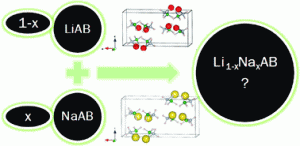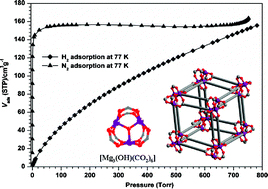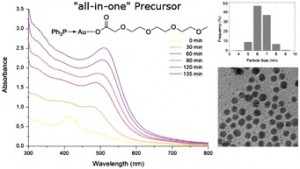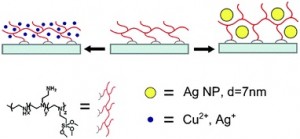This month sees the following articles in Dalton Transactions that are in the top ten most accessed:-
Neutral cuprous complexes as ratiometric oxygen gas sensors
Xiaohui Liu, Wei Sun, Luyi Zou, Zhiyuan Xie, Xiao Li, Canzhong Lu, Lixiang Wang and Yanxiang Cheng
Dalton Trans., 2012, 41, 1312-1319 DOI: 10.1039/C1DT11777G
A porous metal–organic framework (MOF) with unusual 2D→3D polycatenation based on honeycomb layers
Xiaoliang Zhao, Jianmin Dou, Di Sun, Peipei Cui, Daofeng Sun and Qingyin Wu
Dalton Trans., 2012, 41, 1928-1930 DOI: 10.1039/C2DT11898J
Crystal growth of nanoporous metal organic frameworks
Martin P. Attfield and Pablo Cubillas
Dalton Trans., 2012, Advance Article DOI: 10.1039/C2DT12006B
Water oxidation catalysed by manganese compounds: from complexes to ‘biomimetic rocks’
Mathias Wiechen, Hans-Martin Berends and Philipp Kurz
Dalton Trans., 2012, 41, 21-31 DOI: 10.1039/C1DT11537E
Nitrogen-rich porous covalent imine network (CIN) material as an efficient catalytic support for C–C coupling reactions
Manas K. Bhunia, Swapan K. Das, Pradip Pachfule, Rahul Banerjee and Asim Bhaumik
Dalton Trans., 2012, 41, 1304-1311 DOI: 10.1039/C1DT11350J
Two novel 3-D coordination polymers with 5-methoxyisophthalate and flexible N-donor co-ligands showing pentanuclear or alternate mono/binuclear Cu(ii) units
Lu-Fang Ma, Jun-Wei Zhao, Min-Le Han, Li-Ya Wang and Miao Du
Dalton Trans., 2012, 41, 2078-2083 DOI: 10.1039/C1DT11206F
A pair of 3D homochiral metal–organic frameworks: spontaneous resolution, single-crystal-to-single-crystal transformation and selective adsorption properties
Xiao-Dan Zheng, Mei Zhang, Long Jiang and Tong-Bu Lu
Dalton Trans., 2012, 41, 1786-1791 DOI: 10.1039/C1DT11825K
New photoluminescence acylhydrazidate-coordinated complexes
Juan Jin, Fu-Quan Bai, Ming-Jun Jia, Yu Peng, Jie-Hui Yu and Ji-Qing Xu
Dalton Trans., 2012, Advance Article DOI: 10.1039/C1DT11846C
Unusual coordination mode of tetradentate Schiff base cobalt(iii) complexes
Anish Cyriac, Jong Yeob Jeon, Jobi Kodiyan Varghese, Ji Hae Park, Soo Young Choi, Young Keun Chung and Bun Yeoul Lee
Dalton Trans., 2012, 41, 1444-1447 DOI: 10.1039/C2DT11871H
A highly selective and sensitive BODIPY-based colourimetric and turn-on fluorescent sensor for Hg2+ ions
Xiong-Jie Jiang, Cheok-Lam Wong, Pui-Chi Lo and Dennis K. P. Ng
Dalton Trans., 2012, 41, 1801-1807 DOI: 10.1039/C1DT11546D
Why not take a look at the articles today and blog your thoughts and comments below.
Fancy submitting an article to Dalton Transactions? Then why not submit to us today or alternatively email us your suggestions.
Comments Off on Top ten most accessed articles in December
















 Despite the fact that the catalytic activity of Cr and W imido complexes in ethylene dimerization processes has been studied by various authors, to date the analogous Mo catalysts have not been studied. In this HOT article, Dyer et al. set out to fill this gap in our knowledge and several molybdenum bis(imido) complexes were tested for ethylene dimerization catalysis in combination with EtAlCl2, showing moderate activity when bulky aryl substituents at the imido ligand are employed. In contrast, when MeAlCl2 is used the activity of the catalyst decreases considerably. To understand the role of the activator in these processes the authors have determined the molecular structures of several complexes derived of the reaction of bis(imido) molybdenum compounds with different aluminium halide reagents.
Despite the fact that the catalytic activity of Cr and W imido complexes in ethylene dimerization processes has been studied by various authors, to date the analogous Mo catalysts have not been studied. In this HOT article, Dyer et al. set out to fill this gap in our knowledge and several molybdenum bis(imido) complexes were tested for ethylene dimerization catalysis in combination with EtAlCl2, showing moderate activity when bulky aryl substituents at the imido ligand are employed. In contrast, when MeAlCl2 is used the activity of the catalyst decreases considerably. To understand the role of the activator in these processes the authors have determined the molecular structures of several complexes derived of the reaction of bis(imido) molybdenum compounds with different aluminium halide reagents. In this HOT article, several new Ti(IV) complexes bearing aryloxy or alkoxy ligands have been prepared and evaluated as catalysts for the oligomerization/polymerization of ethylene. Obviously, polyethylene is the major product but ethylene oligomers also result, ranging from dimers to higher oligomers. The results indicate a number of different active species are formed upon activation, with oligomers likely arising through a metallacyclic mechanism.
In this HOT article, several new Ti(IV) complexes bearing aryloxy or alkoxy ligands have been prepared and evaluated as catalysts for the oligomerization/polymerization of ethylene. Obviously, polyethylene is the major product but ethylene oligomers also result, ranging from dimers to higher oligomers. The results indicate a number of different active species are formed upon activation, with oligomers likely arising through a metallacyclic mechanism.
